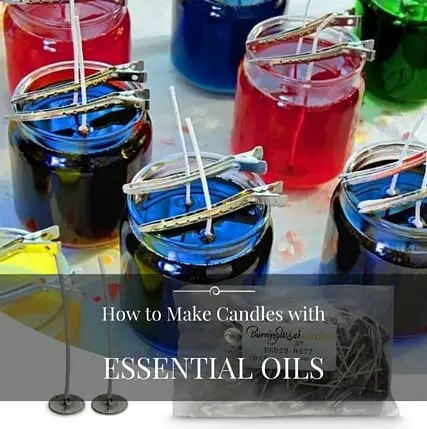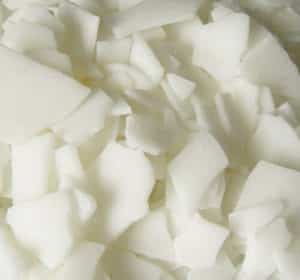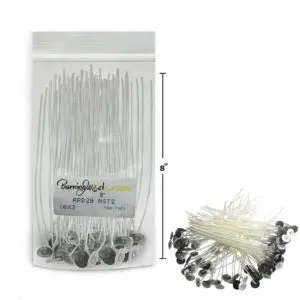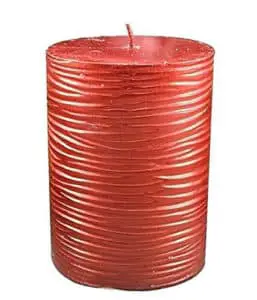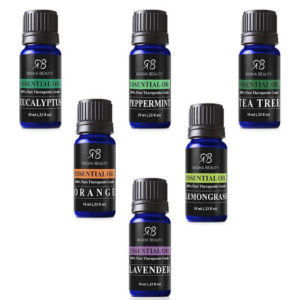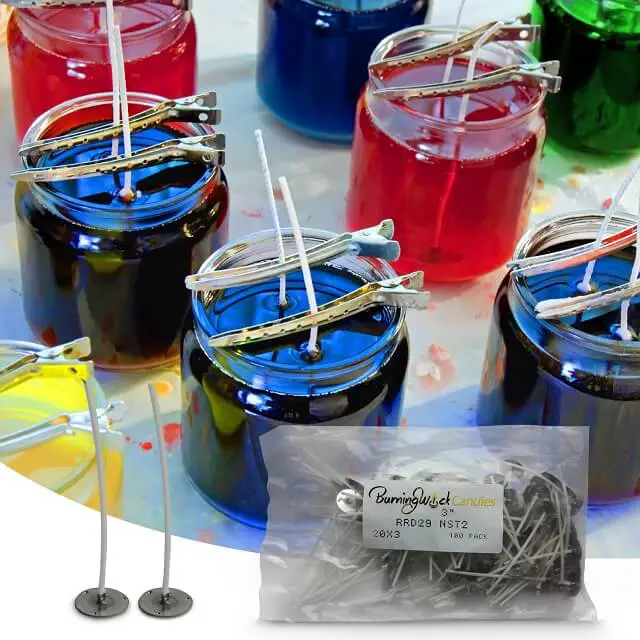A lot of people ask if you can use diffuser oil to make candles. Oils used in diffusers are essential oils. Essential oils have a wide range of health benefits, and I love experimenting with new ways to use them. I’ve made candles before and used oils to scent them and it worked out really well.
In this article I will take you through the steps I followed to make scented candles. I think it’s the easiest and quickest way, two things that I always look for when making things! If you have used oils before and what to get on with it use the navigation menu to skip forward.
For newbies to essential oils here are some basics to get you up to speed on why oils are great to use. Which scents to use, and how to make the most of the aromatherapy benefits that come with them.
Contents
Why Use Essential Oils to Scent Candles
Essential oils have been used in some form for thousands of years. Their properties are pressed from roots and leaves of herbs and plants, with each plant offering a unique scent and health benefits. The oils activate the the brain’s limbic system. Invoking a wide range of positive emotional and spiritual effects.
Making your own candles allow you to choose your own scent. If you have been using oils and making blends that have worked well it your diffuser then you can use the same blends in your candles. You can lose some of the properties in the oils if you apply it while the wax is too hot, but I will cover that in the step-by-step guide.
I also use soy wax which has a lower melting point than paraffin wax. Soy is also a natural material, it burns longer than paraffin, and the scent is supposed to be stronger. So it has everything going for it as a more suitable substance for making the wax.
Most Common Essential Oil Scents
With so many different oils on the market a lot of people aren’t sure which to use. Obviously this comes down to your own preference on scent alone, but if you’re after specific aromatherapy benefits you will need to do a little research. To get you started, here are five of the most popularly used oils.
Eucalyptus – This oil is very powerful in treating cold and flu symptoms. I use it to manage my sinusitis and love the smell. I’ve used it in candles and it works very well around the home.
Ginger – Who doesn’t like the scent of ginger? For me it reminds me of festive seasons and all the foods and drinks that have this spice. It’s healing properties are used to treat pain and inflammations, as well as symptoms of nausea.
Lavender – Lavender is another scent that’s fresh and stimulates pleasant memories of walking through lavender fields. It has a calming effect, reducing stress and anxiety. Perfect for a relaxing bath of just having a nap.
Lemon – Lemon is a popular scent for candles used around the home. It’s antiviral, uplifting, and gives the home a lovely fresh scent like it’s just been cleaned throughout.
Peppermint – I’ve never met someone who didn’t like a fresh mint scent. Peppermint oil is great for tired and achy pains as well as aiding digestion and relieving migraines.
What You Need to Make Soy Essential Oil Candles
Soy Flakes or Chips
Candle Wicks
Candle Mold
Essential Oils
How to Make Candles Using Diffuser Oil Scents
Step 1: Measuring out the Soy Wax
As mentioned above, soy wax is a lot better than paraffin wax for essential oil candles. You can use paraffin if that’s all you have, but the candles will not be as strong or smell as sharp.
Using soy wax flakes, measure out 2 cups worth, which is around half a kg. You can adjust the overall amounts depending on your requirements, but this is what I used.
Step 2: Heating the Wax
Place the wax flakes into a microwave safe container and heat them up for around 3 minutes stirring at invivals. Always put safety first, the wax is going to be very hot, as is the container. Handle with care!
Step 3: Adding the Essential Oils
When the wax is a melted consistency you can add some drops of essential oil. There is no real hard answer for how many drops you need to add. I recommend around 10 drops, but you should use your own nose to determine if you want to use more or less.
Step 4: Adding a Wick
There are a few ways you can do this. The easiest way is to rest a wooden stick across the top of the jar or mold you’re using for the wax. Then secure the wick to the stick and let it hang all the way down into the bottom of the jar.
Step 5: Pouring in the Wax
Pour the wax into the jar, or jars if you’re making more than one candle. If you think the wick is moving off centre you can secure it to the bottom of the jar with something sticky. The wick should be straight and in the middle. Don’t move anything until the wax starts to set, this only takes a couple of minutes.
Step 6: Harden the Wax and Trim the Wick
Place the candle in the fridge for a couple of hours to ensure it’s fully set. Resist poking or testing it for at least two hours. Then remove from the fridge trim the wick off and well done, you’ve made a candle with essential oils!
As you can see, it’s really easy to do. It’s a really satisfying and enjoyable process, and you end up with a candle made exactly how you want and with the scent you want. Who knows, this may be the start of a new business idea!
They also make really good personal gifts for friends and family.
How Many Drops of Essential Oil in a Candle?
This is always one of the first questions people ask. Like I touched on in the steps above it’s largely down to personal preference. Some oils are a lot stronger than others, like eucalyptus for example.
I always put around 10 drops in, but read the label on your oils to see the concentration and how strong they are. It’s also a little trial and error if you’re mixing oils. Make one, light it and see what you think.

I’m a MA, (CMT) Certified Massage Therapist, Licensed Massage Therapist (LMT), and Reiki Master — I’m a licensed massage therapist with over 10 years of experience in the industry.

